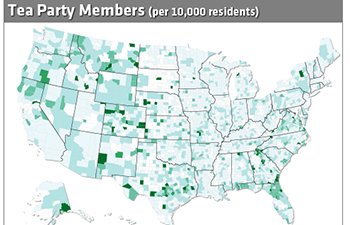Collaboration is one of the public broadcasting buzzwords of the moment. The new PBS NewsHour is a national news organization that is trying to figure out how collaboration works.
Collaboration was one of the bullet points when we announced the changes to the program. As with the staff reorganization, which I wrote about in my previous post on MediaShift, our collaboration efforts are moving along but still have a ways to go.
There are barriers between organizations within the public broadcasting system that we need to continue to break down before real editorial collaboration becomes a part of our natural process.
For us, it will take time and it’s harder to do when HD video feeds are involved, since that requires a high level of quality. But it’s not impossible. It requires creating open communication channels between partners and connecting them with the right people internally who can listen and follow through.
Driving Collaboration From the Top
The plans and intentions for each broadcast are more visible now that I sit in the middle of the newsroom. I’m happy to report that after years of thinking I was one of the only people around who cared about local stations, the new PBS NewsHour is shifting how our producers think about working with our friends in the public broadcasting system.

It’s much easier to move mountains when you have buy-in from the top. And that is what I think we have now, starting with Jim Lehrer who is a big fan of the stations. This is reinforced with support from Linda Winslow, our executive director, and Simon Marks, our associate executive producer.
“The NewsHour recognizes that collaborations with like-minded journalists are a good way to both enrich our content and extend our reach across many different platforms,” Winslow told me. “Most successful collaborations require constant attention and hard work, but the rewards are potentially immense. As news organizations strive to find new ways to engage an audience, partnering with people and organizations who are dedicated to reporting stories fairly, accurately and in some detail is, we believe, one way to ensure the survival of serious news coverage of both domestic and international developments.”
Sample Initiatives
Here are some examples of how the PBS NewsHour is looking to other public broadcasters for collaboration:
- The day the stock market unexpectedly tumbled, Marks almost immediately called his contacts at “Nightly Business Report” to book their co-anchor Susie Gharib for a report from the floor of the New York Stock Exchange.
- Our news summary correspondent Hari Sreenivasan is producing weekly video roundups with local station reporters to offer a snapshot of a topic from different places around the nation. Topics include immigration law and the differences between Tea Party groups.
- In another online-only example, Patchwork Nation worked with NPR’s Planet Money to map and analyze Toxie, their toxic asset.
- We worked closely with NPR on an exclusive interview with a survivor of the Deepwater Horizon oil rig explosion. It aired on NPR’s Morning Edition, and we posted excerpts and a longer version on our site.
- We’re also partnering more with people outside public broadcasting, with international reports from GlobalPost and the Pulitzer Center on Crisis Reporting, and weekly video interviews with Politico journalists.
I’m sure you’d get mixed responses if you asked the different parties how well these collaborations worked. That’s part of the learning process. Expectations need to be set from the start, relationships need to be built slowly, and the conversation should continue after the report is posted.
Changing Roles
My job has changed, too. Since our redesign, one of my main jobs is keeping stations informed of our editorial plans, and making sure the best reporting by other producers or stations makes it onto our home page.
People who tried to partner with us in the past may find a different organization this time around, whether it’s working together on a widget or co-producing a series of reports. In terms of collaborations, we’re still not all the way there, much like the way PBS NewsHour’s complete reorganization still has some kinks to work out.
Fellow public broadcasting collaboration veteran Amanda Hirsch, the project manager for the recently ended EconomyStory project, summed up some of the collaboration projects from the past in her own MediaShift post.
She’s right on many points. I also think it takes a significant amount of internal pressure within an organization to make working with other organizations a priority. And unlike in her post, our online department is no longer in the ghetto. (My first post talked about the creek we had to cross to talk face to face with a broadcast colleague.) I now have a sunny newsroom office, and we’re working hard to bring collaboration to our now-merged PBS NewsHour.
Anna Shoup is the local/national editor for PBS NewsHour with Jim Lehrer. She coordinates with local stations to develop collaborative editorial projects, such as Patchwork Nation, a partnership to cover the economy in different types of places. She also helps out with daily news updates, multimedia stories, and social media projects.


My philosophy on collaboration is: it’s easier to beg forgiveness than to ask permission. If done properly, you’ll be basking in praise rather than doing any begging. :-)) Keep up the good work!
Collaboration has been a part of the DNA of Nightly Business Report throughout the history of the program. We not only talk the talk… we walk the walk.
We believe in collaboration. [email protected]